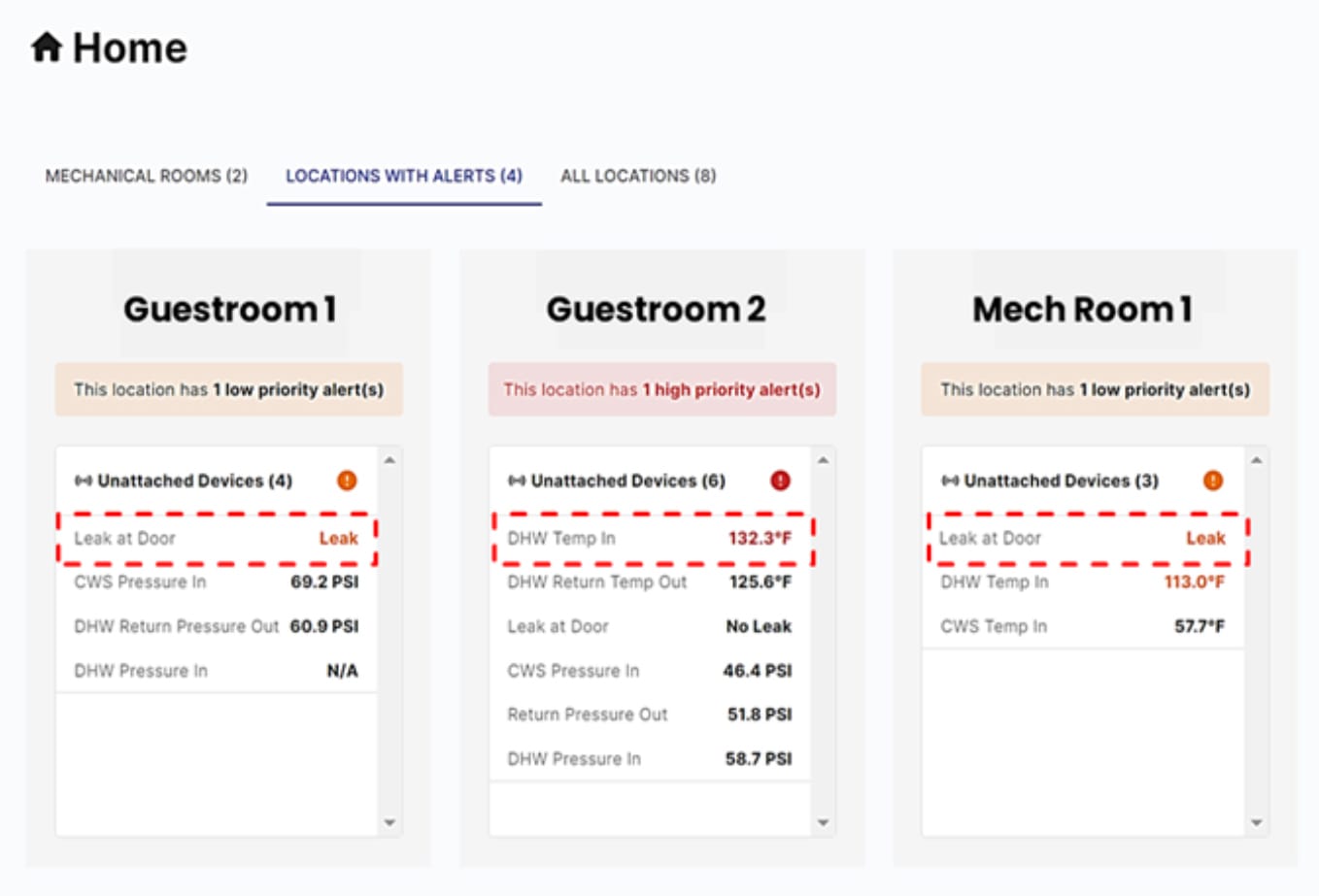Hotel Risk Management Case Study
Nexa enables property to rapidly respond to leaks and scalding risks
Context
Nexa installed temperature and leak sensors at multiple mechanical rooms and guestroom buildings at a high-end hospitality property.
The Director of Engineering (DOE) at a global luxury hotel chain asked Nexa to help them improve guestroom water comfort and safety. As a result, Nexa installed temperature and leak sensors around the property to monitor water conditions in multiple domestic hot water (DHW) branch loops that served the guestroom buildings.
In addition, the property had experienced several leaks which had caused significant equipment damage over the past year. At the DOE’s request, Nexa also installed several leak sensors at vulnerable and hard-to-access areas in the guestroom buildings and mechanical rooms. These sensors would detect if there was any moisture (thus indicating a probable leak), and immediately alert the property team when there was a suspected leak.
The layout of the plumbing system was twinned (i.e., modeled) in Nexa to create a virtual map with sensor locations. This enabled the Nexa team to pinpoint which specific area of the property was impacted when an alert was triggered.
Data
Nexa detected two leaks in the guestroom building and mechanical rooms. In addition, guestroom water temperature in another guestroom exceeded safe limits, creating a scalding risk for guests.
The Nexa sensors would send readings every few minutes back to the Nexa platform (via cellular gateways also installed on the property), and the property team would be alerted if sensor readings fell outside of pre-set thresholds.
On February 14th, Nexa detected leaks in both Guestroom Building 1 and Mechanical Room 1. Furthermore, DHW temperatures in Guestroom Building 2 also exceeded safe levels, which created a scalding risk for guests.

The Nexa system immediately sent an alert to the property engineering team notifying them of these issues
Insights
The Nexa customer success team was able to pinpoint the location of the leaks more precisely, as well as identify which guestrooms would be at risk from the high temperature alert.
In addition to the automated alerts, the Nexa customer success team also provided greater detail on each issue to the property engineering team, allowing the team to respond more effectively and better prioritize each issue.
Using the system map feature in Nexa, the customer success team pinpointed the location of each leak. The leak in Guestroom Building 1 was located near the doorway, which partially obstructed the entrance and created a slipping hazard. Meanwhile, the leak in Mechanical Room 1 was by the entrance, partly obscured by some equipment.
The Nexa customer success team was also able to share which particular guestrooms in Guestroom Building 2 would be at risk from the high DHW temperatures, so that the hotel team could promptly alert any guests in those rooms.
Action
The property engineers and custodial staff were able to “divide and conquer” to quickly restore the DHW temperature to safe levels and clean up the leaks before guests were impacted.
The property engineers prioritized adjusting the water boiler settings first to bring the DHW temperature back to a safe range and eliminate the scalding risk. Two other members of the property custodial staff were dispatched to contain and clean up the water in the guestroom building and mechanical rooms, respectively. Afterwards, property engineers inspected the site of the leaks to understand root cause, and re-tightened two loose pipes which had caused the leaks.
Value
Nexa enabled the property to be proactive instead of reactive when it came to guest safety. It also helped avoid more significant leak damage to equipment, which had cost the property several thousand dollars the previous year.
Nexa allowed the hotel staff to minimize the risk for guest scalding injury and avert the financial and reputational damage from scalding incidents. Prior to Nexa, the property had no visibility in guestroom water conditions, and could only respond once guests had complained and the damage had already been done.
Nexa also enabled the property staff to respond and clean up leaks within an hour, well before the water could spread and cause material damage. Prior to Nexa, leaks at the hotel had often gone undetected for several hours, if not days. As a result, the average undetected leak had cost the property around $5,000 of damages – costs that the hotel could now avoid with Nexa installed on their property.